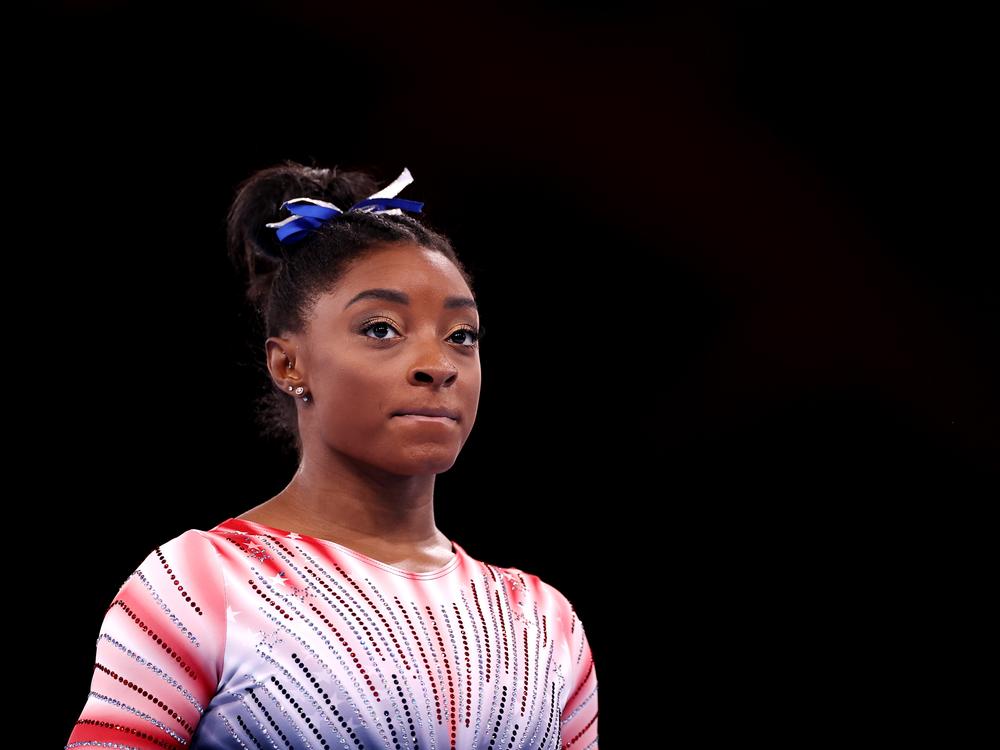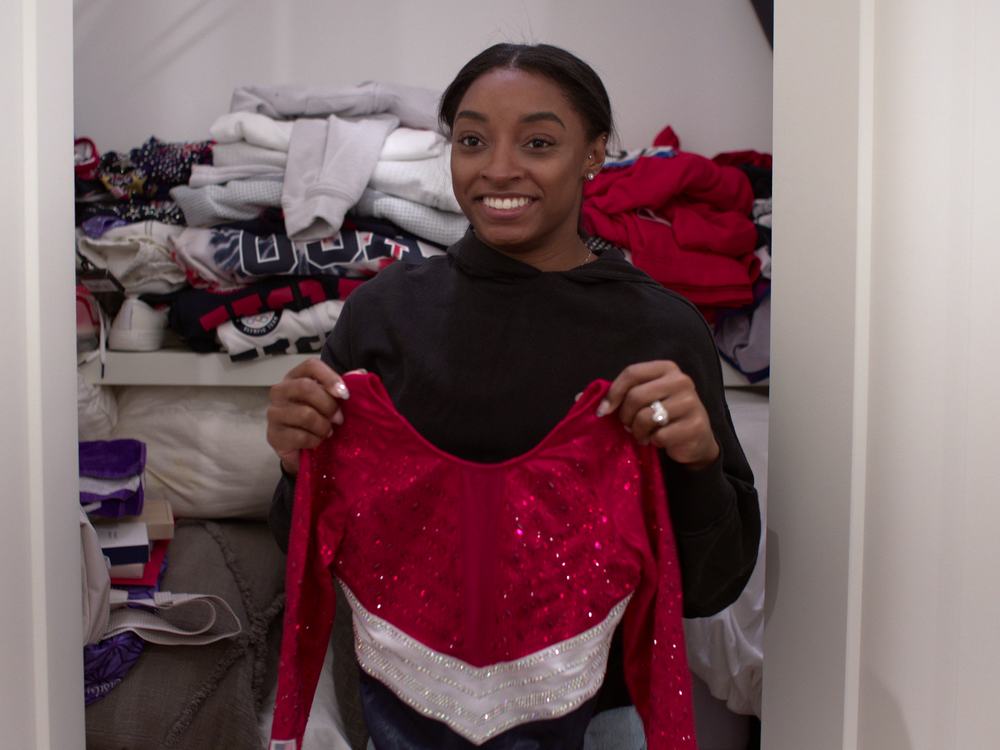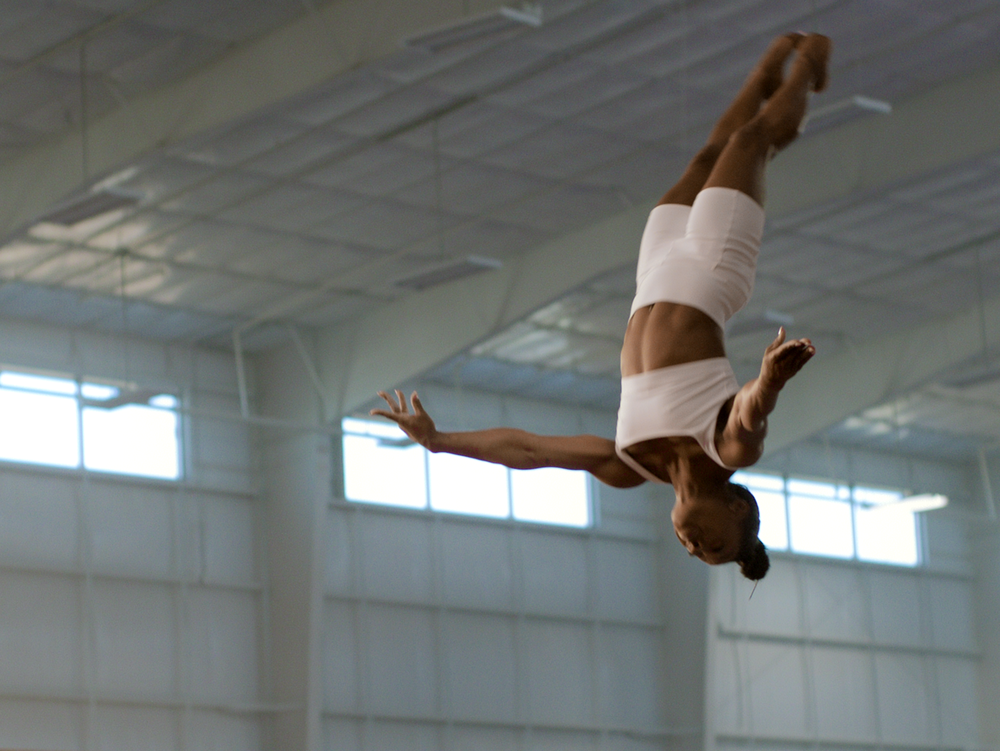Section Branding
Header Content
Simone Biles reminds us: You never know what Olympic athletes are going through
Primary Content
The Netflix series Simone Biles Rising is, on the one hand, exactly what you would expect: a documenting of Biles' remarkable career, with an emphasis on her unexpected withdrawal from the 2020 Tokyo Olympics (which were delayed until 2021) and her preparation for the Paris Olympics, which are under way.
Much of the story is well-known, particularly her utter dominance of her sport in the last decade or so. And it's not the first time anyone has tried to shed light on the mental health vulnerabilities of elite athletes, even at the Olympics: That's also the topic of the HBO film The Weight of Gold (which I highly recommend). What makes this series timely is that it works as something of an education, or at least a reminder, for audiences just as the Olympics start. The message: We don't know these athletes.
When Biles dropped out of most of the competition in Tokyo, some things were known. She talked about having "the twisties," a condition familiar to gymnasts in which the athlete loses the ability to know and control where they are in the air. But a lot of commentators and social media jerks, as you see in the series, blew off that explanation and declared she should have just pushed through, that she just quit, and that a strong person would have continued on no matter what.
What many people featured in the series make clear is that when the twisties hit an athlete, the risk is not just that you'll be embarrassed or lose. As 1992 Olympic medalist Betty Okino says — with a little reluctance, because she doesn't want to scare young gymnasts — you can die. If you can't land on your feet and you instead land on your head, you can die. If you've ever seen baseball players struggle with the yips and keep throwing wildly no matter how many therapies they have attempted, or if you idolize athletes who play hurt in general, think about whether they'd keep doing it if every errant throw was potentially life-threatening.
Biles is also quite open about the fact that the contemptuous and vicious way commentators like Jason Whitlock spoke about her (they still do!) took a toll. She acknowledges at one point that it was a good idea for her to turn off Instagram comments, and that she's removed Twitter (now X) from her phone a couple of times when she needs to.
But perhaps the most useful thing she does in the series is create context for her comeback. Yes, you get to see how she showed up in competition again in 2023 and performed very, very well, at 26 – an age when she says she thought she'd be retired. But while the timing of Olympic competition can be brutal — if you miss your moment, you don't get another one for years — it also means that if you need to recover, you have the time. After Tokyo in 2021, Biles and her coach say she didn't really get underway in the gym again for about a year and a half. The coach says that the only real cure for the twisties is to take time off and try to work on your general well-being, including your mental health. And so that's what she did.
She went to therapy; in fact, she convinced her husband, NFL player Jonathan Owens, to go to a sports psychologist, too, and he speaks about how useful it's been in his own career. She spent time processing trauma in her life, including the fact that she was one of many gymnasts who came forward to acknowledge sexual abuse by Team USA doctor Larry Nassar, part of a very long story that publicly unfolded mostly between her 2016 and 2021 Olympic appearances. And she talks about the fact that when she did come back to the gym, it was not with a glorious fanfare and a delighted spring in her step. She was scared and discouraged. Before competing at the 2023 World Championships in Antwerp, Belgium, she says this: "Mostly, I'm trying not to die."
One possible lesson to take away from the series — perhaps the simplest one — is "Simone Biles is awesome; look how she fought to come back." And that certainly appears to be true. But the other lesson is a bit more complicated: Athletes are just people. They don't follow neat paths, necessarily. For Biles, coming back took time. She was sometimes ambivalent. The ultimate outcome is not assured. Handling the kind of negativity she faces is something she's working on.
Elite athletes (including super-elite athletes, which is the only phrase that really captures Biles' place in her sport) have limits. Top men's tennis player Jannik Sinner isn't playing in the Olympics because of tonsillitis, and mental health is just capable of interrupting a competition. Tennis phenom Naomi Osaka has faced criticism similar to what's been directed at Biles when she's taken care of her own health by taking a step back. (Notably, they are both women of color; there is some smart discussion of the role of race in the Biles film, too.)
So whether they meet their goals or not, much of what Olympians feel and experience is unknowable unless and until they choose to explain it. It may look like just grit and triumph or grit and disappointment, but in fact, it's more impressive to remember that they're complicated people with a lot going on, even when they're not performing.
This piece also appeared in NPR's Pop Culture Happy Hour newsletter. Sign up for the newsletter so you don't miss the next one, plus get weekly recommendations about what's making us happy.
Listen to Pop Culture Happy Hour on Apple Podcasts and Spotify.



